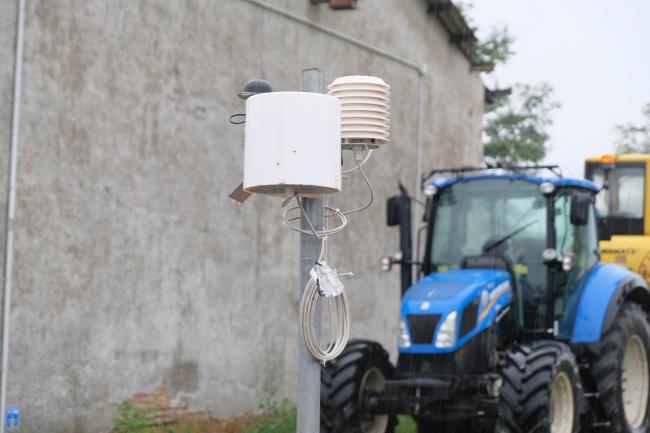Testing an integrated model for less pesticide use, prevention of land-point pollution, surface water

The goal of the smartPEST GO is the development of a PA. GO aimed at testing, economic-environmental verification and large-scale deployment of an integrated model (performing both on a business scale and intra-company) for the reduction from the use of pesticides and the prevention of pollution in post-treatment with PF.
The model will equip the farmer with tools and solutions for prevention in the use of PF and their dispersion in the environment: calibrated on crops; 2 (post-treatment), aimed at better water management of atomizers to prevent point pollution on land and surface waters, offering a more practical and cost-effective solution in line with the Action Plan National for the sustainable use of plant protection products
The smart-PEST 4.0 project experiences an integrated model, both on a business and intra-business scale, for reducing the use of pesticides and preventing point pollution on land and surface water, which will allow the farmer to optimise PF treatments on cereal crops due to a range of weather-climate variability and to reduce the dispersion of residual PFs within atomizers using effective post-treatment protocols , affordable, safe and in line with the environmental objectives set by the PAN.
Smart-PEST 4.0 provides 2 innovation modules, both of which will be built on farms during the trial.
The first innovation module involves the conceptualization of a decision support system calibrated on cereal crops, able to guide the farmer on the best ways and times to maximize treatments with PF, in order to save and reduce environmental externalities.
The second module provides for the creation of technological systems to facilitate the farmer in the best management of the washing water of atomizers, in order to prevent point pollution on land and surface water, offering the farmer a more practical solution, in line with the PAN, and able to save working days/year.
The final economic analysis will reveal the most suitable technical protocol depending on the size of the company, and therefore the best alternative for the rationalization, containment and prevention of the intake of pesticides in the treatment and post-treatment phases.
Reducing the supply of pesticides during field activities
In view of the need to make innovative systems available to the primary sector to guide the farmer on when and how to carry out plant protection treatments, the first trial involves the use of a Decision Support System (DSS) sustainable management of soft wheat, and the development and use of its simplified service in the form of an App.
The conceptual model stems from Horta's research and development activities in European and RDP projects completed or currently underway on various crops, which have contributed to the definition of current DSS.
DSSs have been designed as 'tools' capable of providing additional assistance and information to the farmer or technician, to support the decision-maker, for better use of resources, whether natural or technical input, and allow to implement a production path in accordance with the principles of integrated production (including integrated defence under the 2009/128/CE Directive) and to trace the logic of the decisions behind each operation carried out during the season.
The advantage of the developed service will be to display the output of the models generated for the pilot company, which will be conducted according to the agronomic technique characteristic of the area, and therefore with characteristics comparable to that of their own business situation. The monitoring network set up in the project and the insertion of observations made into the system by CONFAGRICOLTURA technicians will also ensure that models can be recalibrated if necessary, resulting in simulations more responsive to the Reality. The farmer will then have access to a simplified decision support system, always up-to-date, contextualised and specific to Rhodesian grain growers.
The first organizational model that will be compared is the testing of stations for the collective treatment of effluents characterized by the construction of 3 storage areas (satellites), where the temporary cleaning and storage treatments of the waste of the machines will be carried out by nearby farms (indicatively within a 7km radius, considered as the critical distance other than the farmer has no convenience to go) central , also equipped for washing, which will also be the delivery of waste for final treatment (with BF Bulles procedure) and disposal (only of the "scum" and exhausted filters) / reuse (the purified water are reused for subsequent washes ). This system will be tested at the CO.S.V.A. CO.S.V.A. CO.S.A. TOLLE Cooperative, that is, in an area where the presence of atomizers is more massive and where the existing associative model, coupled with economic convenience and time compression, should be an effective alternative to pursue the objectives of the NN.
The second organizational model that will be compared is the experimentation of 2 different individual dehydration solutions at 3 target farms Ca' Pisani, Ca' Tiepolo, Uccellatori. The procedures will be linked to the use of the Osmofilm system, characterized by total energy independence (procedure of osmosis via selective permeable membrane) and the Phytosec system, characterized by extreme practicality and consumption extremely low (80 watts).
Both systems are also distinguished, compared to other solutions, for the attention to purify even the most volatile part of the active ingredients and for their effectiveness even in crops that involve the use of copper and other heavy metals (lives and "It's not a good thing," he said. Same.
| Titolo/Descrizione | Url | Tipologia |
|---|---|---|
|
Sito web del progetto
|
Sito web
|
|
|
SmartPEST APP
|
Materiali utili
|
|
|
Facebook
|
Link ad altri siti che ospitano informazioni del progetto
|
|
|
Informatore agrario - SmartPest e Agrobox: difendere i cereali senza inquinare si può
|
Materiali utili
|
|
|
Smart Pest 4.0 - Farmers as protagonists of innovation
|
Materiali utili
|